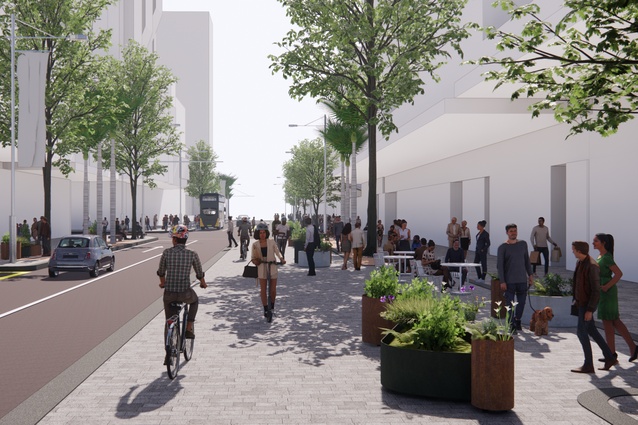Auckland Council announces plans to complete Queen Street redesign
After feedback from the public, Auckland Council has announced some key elements of the final three stages of the Wai Horotiu Queen Street Project, which the council says will deliver “one cohesive design”.
The proposal includes widened footpaths – up to 7 metres – from Customs Street to Mayoral Drive, with parts of these allocated to “those moving quickly on foot, or slowly by micro-mobility (e.g. scooter) and bike”, the Council reports. Faster bikes will be encouraged to still use the road itself.
Additionally, the new design features an Essential Vehicles Area (EVA) that will stop access to which will block access for private motor vehicles to Queen Street between Wellesley and Wakefield Streets. According to the Council, the EVA will permit buses, bikes, mopeds, motorcycles, goods and service vehicles and emergency vehicles.
Other details about the proposal from Auckland Council include:
- Loading zone designations will better align with business needs. The provision of drop-off and pick-up zones for general use and spaces for mobility card holders around the Town Hall are also proposed.
- It is proposed the EVA will work alongside turning restrictions and bus lanes to reduce both emissions and traffic volumes in line with the CCMP’s vision for Queen Street to become a pedestrian-priority transit street.
- Auckland Council is also proposing to change the legal designation of Vulcan Lane, and short sections of Fort Street and Lorne Street, to make them pedestrian malls. This will further prioritise pedestrians and reduce traffic into Queen Street.
The Council and Auckland Transport will be collecting public feedback on aspects of these changes later this month. Work is set to begin at the end of 2021, with the entire Wai Horotiu Queen Street Project due to be completed by September 2022.
Auckland Council Director of Infrastructure and Environmental Services Barry Potter says, “Aucklanders asked us to deliver the balance of the project in a single, unified design, and that’s the solution we are announcing today. It reallocates space to create better areas for people walking, cycling and using public transport, while also continuing to enable servicing and deliveries for homes and businesses.
“We believe this will be in place until the CRL is completed and pending a future design which might include light rail. We will be constructing in a way that doesn’t dig up the road and allows us to change and remove materials and re-purpose them for future works.”










